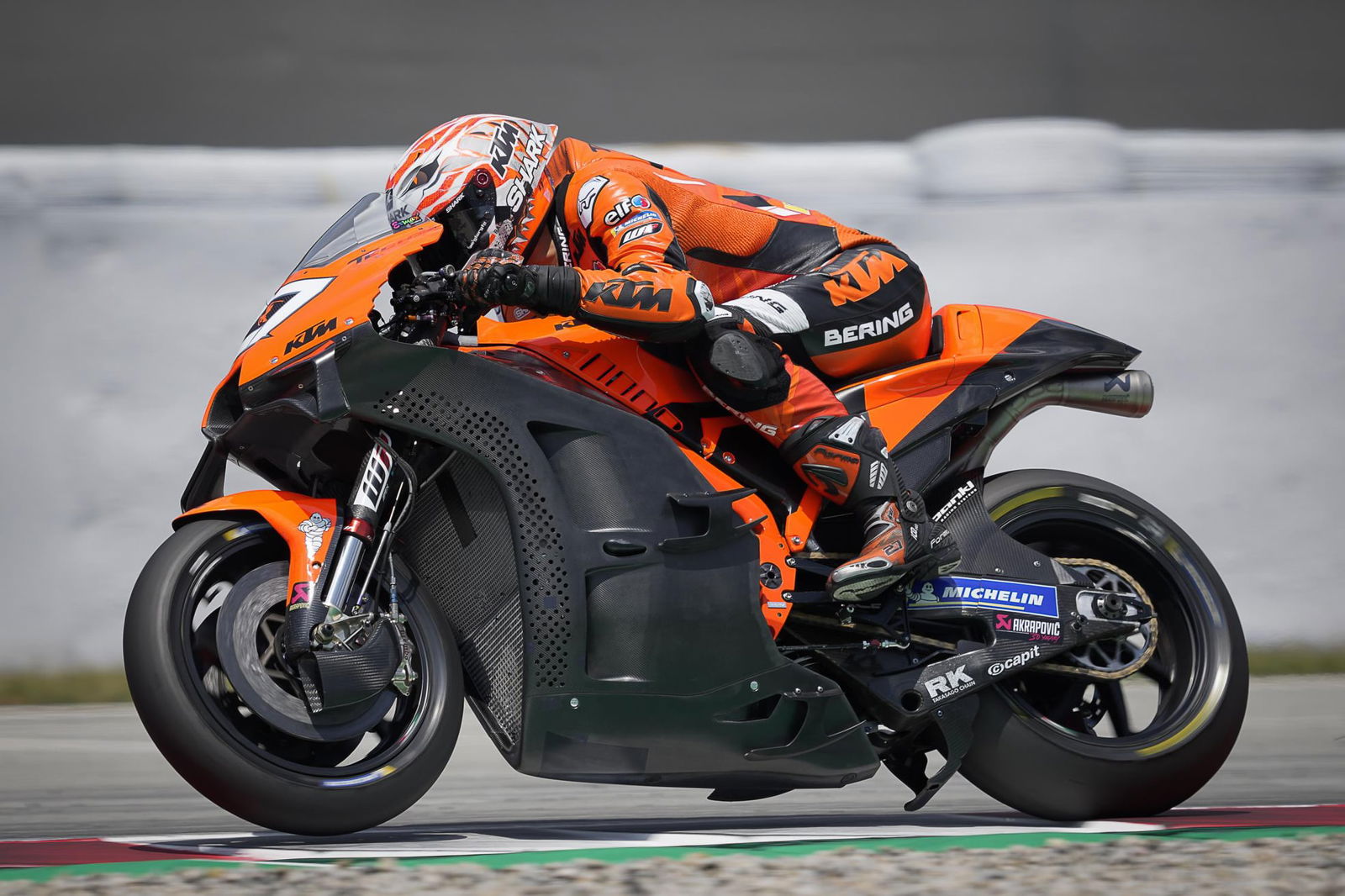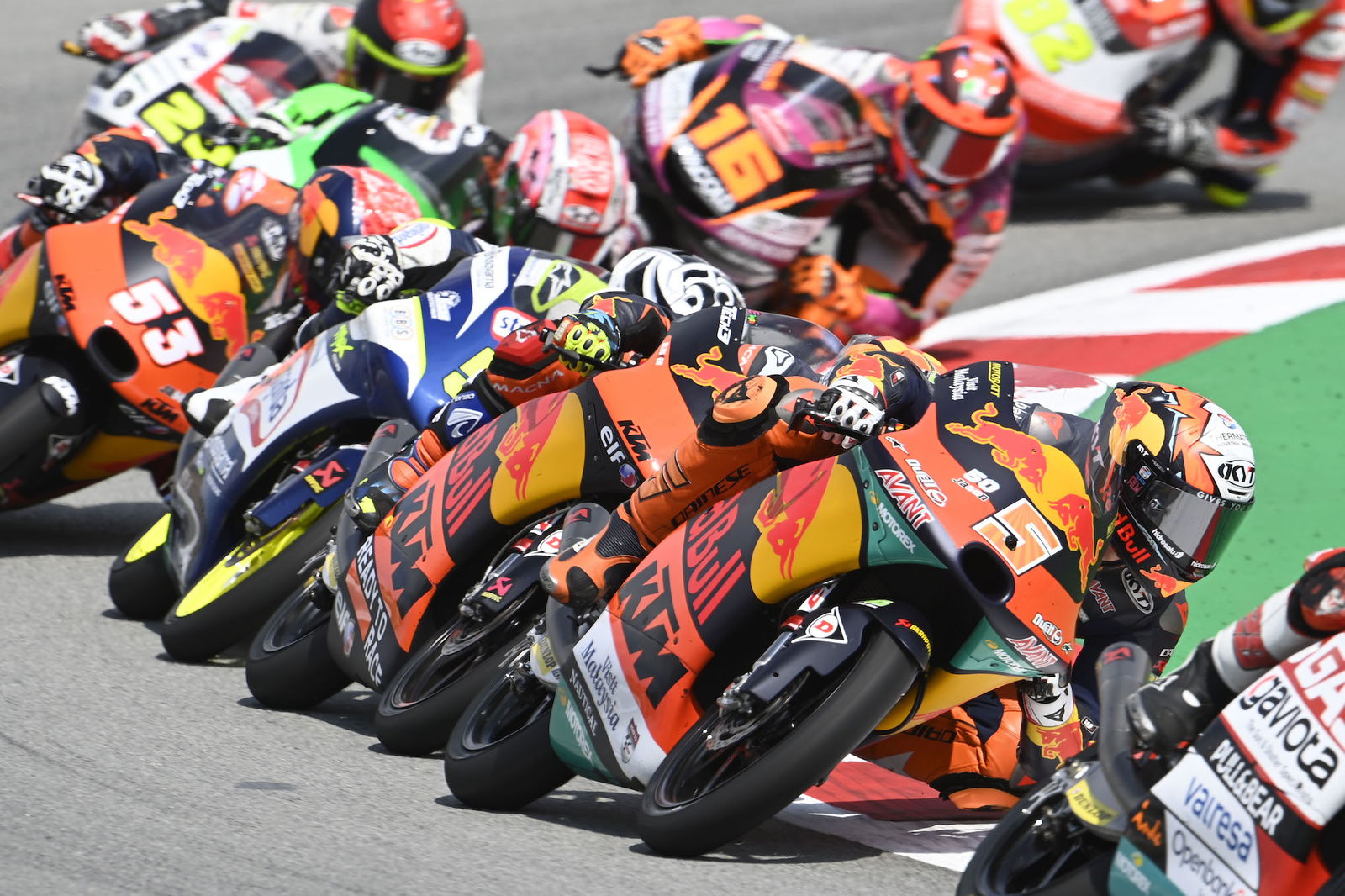Marc Marquez and his troubled MotoGP return - Is it him or is it Honda?
Marc Marquez's return to MotoGP should be the start of a return to form for Honda... but is actually adding to the problems for the once dominant team

Five races have passed since Marc Marquez returned to racing action in MotoGP, ten months on from the accident at the start of the delayed 2020 season in Jerez that first caused the arm injury that scuppered his hopes of a seventh title in eight years.
At the time the Spaniard made it clear he was still traversing the final portion of what has been a long, arduous and no doubt painful recovery process, but since there is no substitute for actually racing when it comes to match fitness he has persevered.
He soldiered on with a seventh in his comeback event and a ninth after that, results that were noteworthy in the circumstances.
But while few will say Marquez is 100 per cent fit, repeated accidents - including three from the last three races - are training the spotlight back on Honda amid concerns it has entirely lost its way in development without its talisman.
For sure, Marquez is not the rider we saw during the 2019 MotoGP season where not only was he dominant but he had the confidence to toy with his rivals, drag out the battles knowing full well he had another 10% in hand to sneak them across the line. He could have disappeared into the distance like Casey Stoner did (not popular) or he could have some fun and do it for a show like Valentino Rossi - each was still psychologically demoralising for rivals.
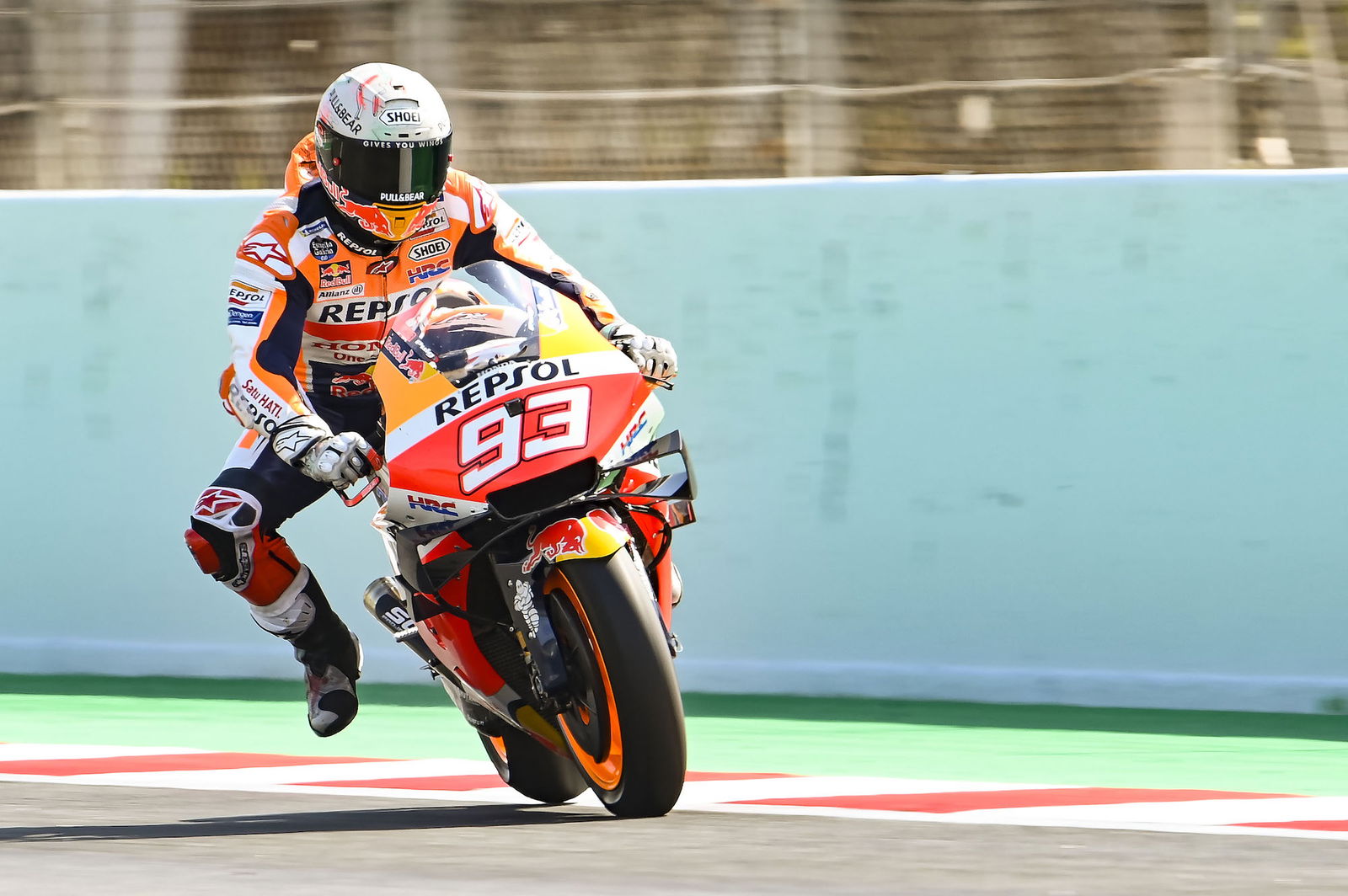
How far from 'peak Marc Marquez' is he Marc Marquez?
No-one was expecting him to be back to his best straight away. After all, watching a fully fit Marquez on a Honda tuned to his unique style is breathtaking to watch in its sheer strength as he shifts himself across the RC213V in a way that is both smooth yet aggressive.
It’s also very physical though and today Marquez certainly looks stiff attempting something to that effect, which is perhaps why he is unable to catch the snaps and the slides as quickly or as effectively as he would normally. Then again, statistically he is regarded as one of MotoGP’s most prolific ‘crashers’, he just didn’t do it so much on race day..
It’s worth noting that Marquez doesn’t speak so much about the arm injury - which occurred at Jerez - but points to his shoulder as being a problem. Many will have forgotten but Marquez crashed heavily in a test at Valencia in November 2019 injuring his shoulder, a year after a similar accident hurt his other shoulder.
He underwent surgery and there were question marks over whether he’d make the 2020 season opener in Qatar three months later. That was then cancelled and little has been said about the injury since, most assuming the extended winter period was sufficient to heal it, even before his enforced 10 month hiatus.
However, in that time he has lost the strength he needs around the shoulder, the kind of strength that can only be attained on a bike - rather than in the gym - an issue brought into focus by the fact only last month, after his comeback, was he allowed to ride a racy bike (a production Honda CBR600RR on a track) in the interests of training.
Only Marquez will know how far from his peak performance he is and how much he may never recover, but after completing 87 laps in Monday’s post-Catalunya MotoGP test - after back-to-back race weekends - the fitness is definitely getting there, even if he didn’t complete all that many racing laps in the end.
Regardless, physical performance is one thing, having machinery beneath you is another and there is a growing suspicion that Marquez’s patchy form is less to do with him and more to do with the Honda in his grasp.
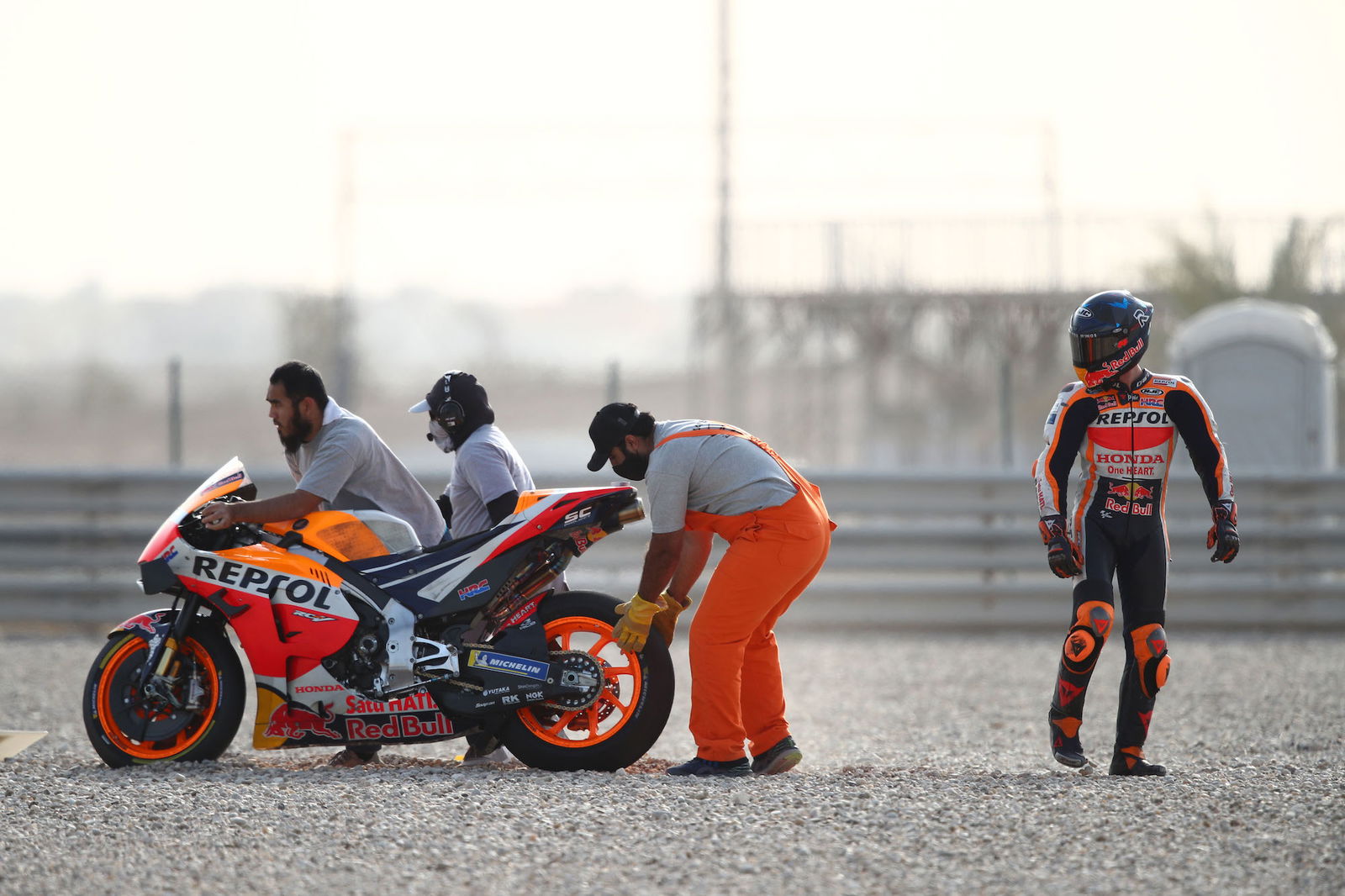
Have Honda really dropped the ball with the 2021 RC213V?
Put simply, yes. But this is a problem that goes right back to before the 2020 MotoGP season when Honda went so far down the rabbit hole of developing a RC213V that suited Marquez that it went beyond the Spaniard’s incredible but not impenetrable abilities.
It stems from Marquez’s ability to get the bike stopped and down to some remarkable lean angles, before hitching it up and getting on his way. Cal Crutchlow repeatedly found this approach - which he said left him with no feel for the front-end - frustrating but while it caught him out on several occasions, he worked hard to find the balance that allowed him and others to go fast enough on it when the conditions suited. Even Takaaki Nakagami on the 2019 bike, once he adopted Marquez’s data, found the operating window that was slender but effective, going on to prove a revelation in 2020.
With a combination of a 2019-aero package on a 2020 chassis, Marquez was in the process of dialling it back into a competitive bike when he had his accident. It left Honda with a strange 2019-2020 hybrid it had cobbled together, no Marquez, an injured Cal Crutchlow, its most competitive entry (Nakagami) on a 2019 bike, one test rider now focused on developing over race weekends (Stefan Bradl) and a rookie in Alex Marquez as its line-up.
Flashes of form aside, it was a fairly desperate 2020 season that exposed the feared strategy of putting one’s eggs into a Marquez shaped basket. Honda had ironically identified this before Marquez’s accident by signing Pol Espargaro for 2021 but fate has a dark sense of humour.
What is perhaps most alarming about Honda’s troubles is how reliant it had become on Marquez’s input that it had funnelled not only resources into developing one ultra fast bike for one ultra fast rider, but seemingly the thought processes too. So much so that without him Honda appeared to have no idea what to do without him.
It’s a chain of events that has unfurled into today’s situation - a 2021 bike (largely the same as 2020 as per the technical freeze) that has been chopped and changed so much that, as Espargaro exposed, resulted in Honda putting four riders on three different specification bikes in Jerez. Honda is attempting to throw everything at this unloved RC213V in the hope something will stick, but Espargaro wants it to find one way and have everyone push in the same direction.
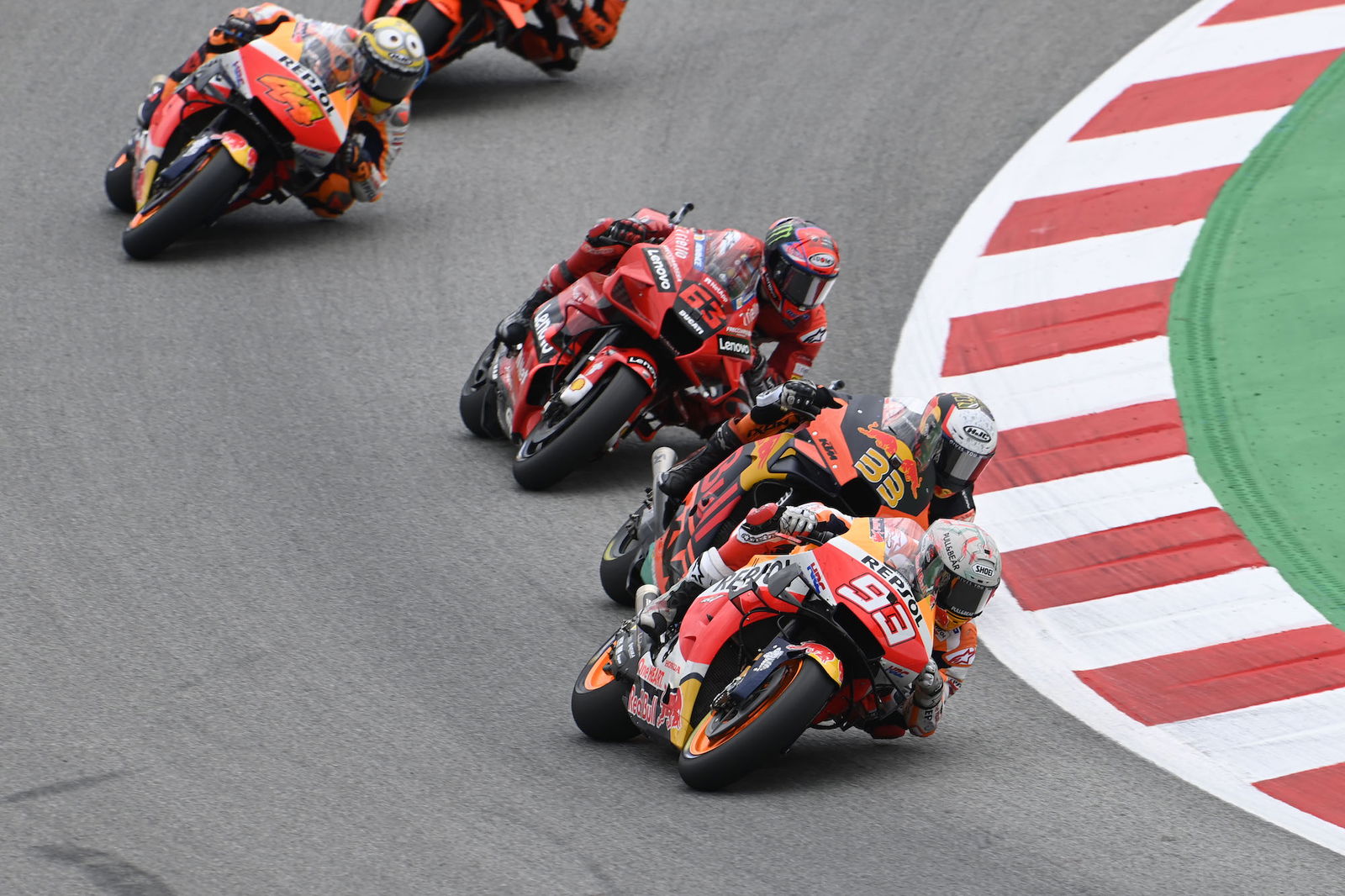
The Honda MotoGP conundrum
Which brings Honda (and its riders) to a conundrum. Should it default to listening to Marquez because that’s where the success has come from in the past?
This is risky because he isn’t full strength, which could leave Honda developing the RC213V back to suit him predominantly without knowing entirely if he’ll ever get back to the physical style that worked so well for him, but not others. In short, it could develop a bike that suits no-one, but then this appears to already be the case.
With this in mind Espargaro should be Honda’s asset. The Spaniard is credited with performing much of the legwork that has led to KTM’s explosion of competitiveness over last year. Indeed, you cannot help but feel for him that he has chosen the Honda route, especially as he dumped himself out of his home Catalunya MotoGP in a race won by the person who replaced him on the KTM, Miguel Oliveira.
You sense some frustration setting in for Espargaro both for his own performances, which haven’t exactly sparkled since joining, and the staccato approach to development that is a little bit here, a little bit there.
It’s can also be argued Honda is missing the input from Crutchlow. The Briton knew his way around the Honda like no-one else, especially in race trim, and while the results certainly tailed off towards the end, his honest appraisals were never defeatist and he worked hard to develop a package that would give him the best chances without taking away what was needed to keep Marquez winning. Honda’s loss, Yamaha’s gain.
In fact, perhaps the best indication of Honda’s woes are to be seen in the LCR garage. Nakagami jumped from a title-winning 2019 machine to 2021 spec model for this season and the leap has not suited him.
The Japanese rider has found himself crossing back to the former specs, or a hybrid of three, in an effort to rediscover form that had him leading the pack at times last year. It says a lot that his (and Honda’s) best finish of fourth was achieved on the 2020 bike.
As for Alex Marquez, his pre-determined shift from Repsol to LCR has made him the forgotten rider of 2021. We all expected a tough rookie campaign given his late graduation to the seat followed by another pressure-laden promotion to de facto (but not realistic) team lead in 2020.
But he saved what was otherwise a fairly anonymous year with two grandstand podiums in the wet at Le Mans and the following week at Aragon, which showed how just having confidence on a tricky package can account for more than a few tenths alone.
His 2021 race day efforts have been getting better, but it’s hard to ignore he has qualified last for each of the two most recent events.
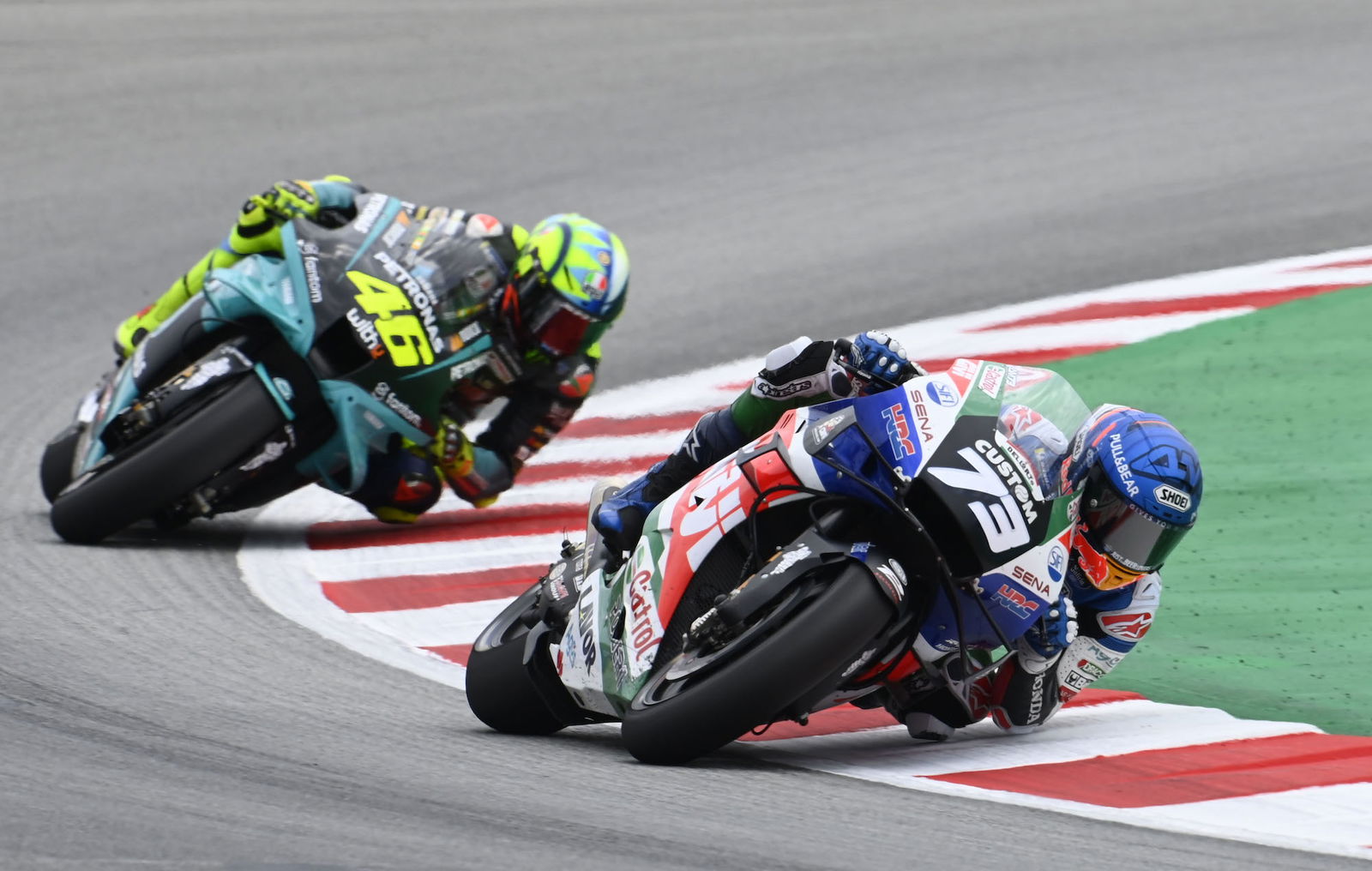
Why qualifying troubles really expose the Honda problem
Still, he can take (scant) heart from the fact Honda’s qualifying efforts in 2021 have lurched from disappointing to dismal all round. Indeed, Honda's qualifying record is telling, not least because it can't point to Marquez's lack of fitness so much for why it isn't performing well over a single lap.
It has reduced the Spaniard to ‘caravanning’ rivals - much to their irritation and no doubt his own frustration - but even if he, or his team-mates crack Q2, they are nowhere to be seen on the front rows regardless.
Marquez has the manufacturer’s best start of the year with a sixth on his Portimao comeback, but from a possible 30 Q2 opportunities across its four riders, it has achieved a top 12 start only ten times - Marquez twice, Espargaro four times, Nakagami twice, Bradl twice and Alex Marquez not once - and only three of these are on the top three rows.
And it is this failure to get the RC213V switched on over a single lap, which leaves the riders in the pack and forces a less than fully fit Marquez having to get his hobbled elbows out to make progress.
So while there is more to come from Marquez, it's perhaps not as much as you'd think because it’s hard to believe he’d be winning races on this bike regardless, fit or not.
